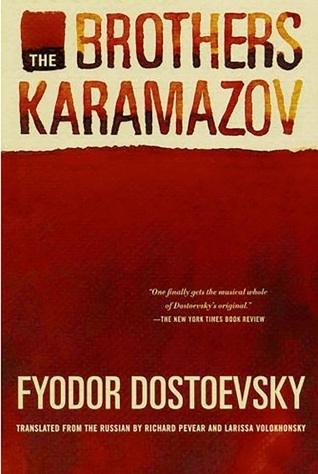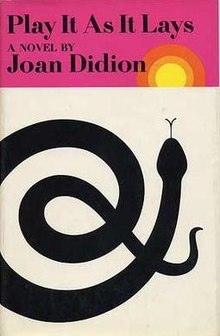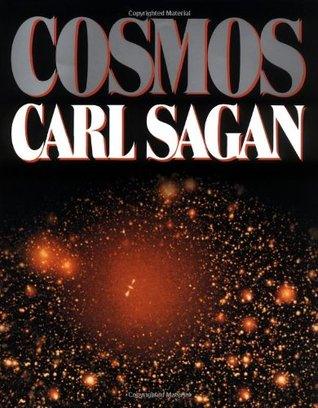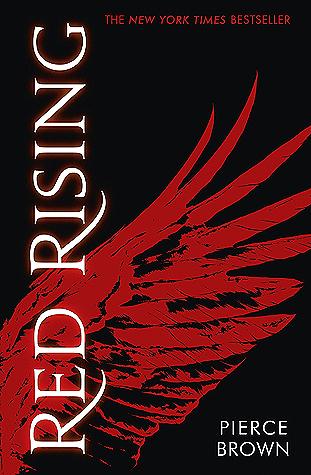The Grapes of Wrath by John Steinbeck Book Summary
Explore our comprehensive summary and key insights of John Steinbeck's "The Grapes of Wrath." Dive into a detailed review that uncovers the themes, characters, and historical context of this literary classic. Perfect for students and literature enthusiasts alike!
The Grapes of Wrath Book Summary
John Steinbeck’s The Grapes of Wrath is a powerful tale of resilience and hardship during the Great Depression. This novel captures the struggles of the Joad family as they journey westward in search of a better life, highlighting themes of injustice, hope, and human dignity. In this summary and review, we explore the book’s key insights and enduring impact, revealing why it remains a timeless classic that resonates with readers across generations.
Discover a comprehensive overview and in-depth analysis in the City of Thieves Book Summary, Review & Key Insights to deepen your understanding and appreciation of this gripping novel.
The Grapes of Wrath by John Steinbeck - Introduction
I had no idea that a book written in the 1930s could make me rethink how deeply economic hardship shapes not just families, but entire communities. When I picked up The Grapes of Wrath by John Steinbeck, I thought it would be just another classic American novel—something assigned in school that I needed to get through. But it turned out to be so much more than that.
What surprised me most was how Steinbeck doesn’t just tell you about the Dust Bowl and the Great Depression; he makes you feel the desperation and hope of the Joad family as if you’re right there in the dust and heat with them. It made me realize how history isn’t just dates and facts—it’s real people struggling to survive, and that struggle still echoes today.
You might want to read this if you’re someone who loves historical fiction or classic literature, or if you ever wondered what life was really like for American families during those tough times. It’s also a great pick if you’re in school and want to connect more deeply with the themes your teachers talk about. At 479 pages, it’s a solid read, probably around 15-20 hours depending on your pace, but totally worth it.
So if you want a book that’s both a powerful story and a window into a critical moment in history, this one’s for you. I promise, it’ll stick with you long after you turn the last page.
What is The Grapes of Wrath About?
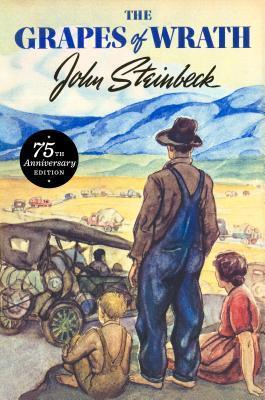
The Grapes of Wrath by John Steinbeck follows the Joad family as they journey from Oklahoma to California during the Great Depression, seeking a better life amidst hardship and injustice. The book's main message highlights the resilience of the human spirit and the importance of community in the face of adversity. Key concepts include the struggles of migrant workers against economic exploitation, the impact of social injustice on families and individuals, and the need for solidarity and collective action to overcome systemic challenges.
About Book Author - John Steinbeck
Ladies and gentlemen, it’s my pleasure to introduce you to John Steinbeck, a literary voice deeply rooted in the American experience. John didn’t start out as a celebrated author; he grew up in Salinas, California, where the struggles of migrant workers and the beauty of the land profoundly shaped his worldview. This background inspired his masterpiece, The Grapes of Wrath, which captures the plight of families during the Great Depression.
What’s interesting about John Steinbeck is that he once worked as a laborer on farms, giving him firsthand insight into the hardships faced by those he wrote about. Beyond The Grapes of Wrath, his works like Of Mice and Men and East of Eden further explore themes of resilience and humanity.
John's unique experiences and empathetic approach to storytelling make him exceptionally qualified to address the complexities of social injustice and human struggle. His ability to weave personal narratives with broader societal issues continues to resonate with readers today.
More Books To Find
The Grapes of Wrath - Book Overview
It's about a family's struggle during the Great Depression. The Joads, who are farmers in Oklahoma, lose their land and set out to California in search of a better life, only to find that it’s not the promised land they hoped for.
Steinbeck wrote it to highlight the injustices faced by the poor and disenfranchised. He wanted to shine a light on the systemic failures that left people like the Joads vulnerable, not just to economic hardship but to societal indifference.
What sets it apart from other books on similar topics is its deep emotional resonance and rich character development. Instead of just presenting facts, Steinbeck immerses you in the lives of these characters, making their struggles feel personal and relatable. It’s like you’re not just reading about their hardships; you’re experiencing them alongside them.
One specific story that stuck with me is when the family is forced to camp in a makeshift tent city. The sense of community among the displaced families, despite their dire circumstances, is incredibly poignant. It reminded me of how, even in the worst times, people can come together and support one another, which is a powerful testament to human resilience.
Key Insights of The Grapes of Wrath
The Grapes of Wrath by John Steinbeck offers profound insights into human resilience and societal struggles during the Great Depression.
1. Human Resilience: The Joad family's journey symbolizes the strength of the human spirit. Despite facing numerous challenges, their determination to survive and maintain family bonds highlights the power of hope.
2. Social Injustice: Steinbeck sheds light on the inequalities faced by migrant workers. The exploitation by landowners and the harsh realities of poverty illustrate the systemic issues that perpetuate suffering, urging readers to empathize with the plight of the disenfranchised.
3. Community and Solidarity: The novel emphasizes the importance of community among the oppressed. As the Joads interact with other migrants, the theme of collective struggle emerges, suggesting that unity is essential for overcoming adversity.
4. The American Dream: Steinbeck critiques the illusion of the American Dream. The Joads' pursuit of a better life in California reveals the stark contrast between aspiration and reality, challenging the notion that hard work guarantees prosperity.
5. Nature's Indifference: The portrayal of the Dust Bowl serves as a reminder of nature's power and indifference. The environmental devastation faced by the Joads reflects humanity's vulnerability and the consequences of exploitation, urging a deeper respect for the land.
These insights collectively underscore Steinbeck's commentary on the human condition, societal structures, and the enduring quest for dignity amidst hardship.
Who Should Read This Book
"The Grapes of Wrath" by John Steinbeck is essential reading for anyone interested in American history, social justice, and the human condition. It resonates with those who seek to understand the struggles of the disenfranchised and the impact of economic hardship. Readers who appreciate literary classics, character-driven narratives, and powerful themes of resilience and family will find this book compelling. Additionally, activists, students, and anyone concerned with issues of inequality and migration will gain valuable insights from Steinbeck's poignant portrayal of the Great Depression and its enduring relevance today.
Read If You Are
- Interested in classic American literature and its historical context.
- Seeking to understand the struggles of the Great Depression and its impact on society.
- Passionate about themes of resilience, family, and social justice.
Skip If You Are
- Not interested in historical fiction or social commentary.
- Prefer lighthearted or fast-paced narratives.
- Dislike stories that explore themes of hardship and struggle.
Important Takeaways from this Book
-
Start a Community Garden: Gather neighbors and create a communal space for growing fruits and vegetables. This fosters community ties and provides fresh produce, reducing reliance on grocery stores. Ensure you have access to land and gather a group willing to participate.
-
Volunteer at a Local Food Bank: Dedicate a few hours each month to help distribute food to those in need. This action directly addresses food insecurity in your community, making a tangible difference. Check the food bank’s schedule and sign up for shifts that fit your availability.
-
Educate Yourself on Economic Inequality: Read books or articles about economic disparities and their impact on society. Understanding these issues empowers you to advocate for change and support policies that promote equity. Set aside time each week to read and reflect on these materials.
-
Support Local Farmers: Buy produce from local farmers’ markets or join a Community Supported Agriculture (CSA) program. This strengthens local economies and ensures you’re consuming fresher, seasonal foods. Research local markets or CSAs in your area and plan your shopping trips accordingly.
-
Advocate for Workers’ Rights: Get involved in local initiatives that support fair labor practices. This can include signing petitions, attending meetings, or joining advocacy groups. By standing up for workers, you contribute to a fairer economy. Identify local organizations focused on labor rights and find ways to participate.
Book Review
I picked up "The Grapes of Wrath" expecting a straightforward tale about the Great Depression, but what I got was a profound exploration of human resilience and social injustice. Steinbeck's writing style is both poetic and gritty, immersing you in the struggles of the Joad family as they journey from Oklahoma to California. The vivid descriptions of their hardships made me feel their pain and hope, especially in scenes like the family’s desperate fight for survival during the dust storms.
One of the book's greatest strengths is its ability to balance personal stories with broader social commentary. For instance, the intercalary chapters that delve into the plight of migrant workers are powerful and thought-provoking, providing context that enhances the Joads' narrative. However, I did find the pacing uneven; some sections felt slow and meandering, which made it challenging to stay fully engaged at times.
Comparing it to other classics like "Of Mice and Men," I appreciated Steinbeck's deeper dive into systemic issues rather than just individual struggles. While "Of Mice and Men" is more focused on personal relationships, "The Grapes of Wrath" tackles the collective experience of a community, which I found compelling.
Overall, I think this book is a must-read for anyone interested in American history or social issues, though it might not appeal to those who prefer fast-paced narratives. If you’re willing to invest the time and emotional energy, you’ll find a rich tapestry of human experience that resonates long after the last page.
Final Thoughts
If I'm being honest, finishing The Grapes of Wrath left me with a heavy heart but a clearer perspective on resilience and humanity. The struggles faced by the Joad family really highlight the harsh realities of the Great Depression, and it’s a poignant reminder of the strength people can find in community during tough times. I'd definitely recommend this if you're someone who appreciates deep character exploration and social commentary. However, skip this one if you're looking for a light read or a straightforward plot; it’s anything but easygoing.
The thing that surprised me most was how relevant the themes still feel today, especially regarding economic disparity and social justice. Months from now, I know I’ll still be reflecting on the sacrifices made by the characters and the enduring spirit they embody.
As for reading it again, I think I'd prefer to dive into the full book rather than just a summary. The richness of Steinbeck's prose deserves to be experienced in its entirety. Overall, this was a powerful read for me, and I genuinely appreciated the journey it took me on.
Frequently Asked Questions
How long does it take to read The Grapes of Wrath?
The Grapes of Wrath by John Steinbeck has 479 pages. On average, it takes about 12-15 hours to read, depending on your reading speed. This translates to roughly 1-2 weeks if you read a little each day.
What makes "The Grapes of Wrath" different from other books in this genre?
The Grapes of Wrath stands out due to its profound social commentary, rich character development, and vivid portrayal of the human struggle during the Great Depression. Steinbeck's blend of realism and empathy creates an emotional resonance that transcends typical genre conventions, making it a timeless classic.
Who is the target audience for The Grapes of Wrath
The target audience for "The Grapes of Wrath" includes readers interested in social justice, American history, and the struggles of the working class during the Great Depression. It appeals to those who appreciate literary classics and themes of resilience, family, and the search for a better life.
Are there any criticisms or limitations of The Grapes of Wrath
Critics often point to the book's melodramatic elements and perceived sentimentality, arguing that it oversimplifies complex social issues. Some also feel Steinbeck's portrayal of characters lacks depth, and the novel's pacing can be uneven, potentially detracting from its overall impact.
What is the main theme of The Grapes of Wrath by John Steinbeck
The main theme of "The Grapes of Wrath" is the struggle for survival and dignity during the Great Depression. It explores the injustices faced by migrant workers, the importance of community and resilience, and the fight against social and economic inequality.
Tags:
John Steinbeck, The Grapes of Wrath, The Grapes of Wrath Book, The Grapes of Wrath Book Rating, The Grapes of Wrath Book Review, The Grapes of Wrath Book Summary, The Grapes of Wrath By John Steinbeck, The Grapes of Wrath Description, The Grapes of Wrath Short Summary

Michel Fisher
Michel Fisher is a passionate fiction enthusiast and book blogger who writes about emotional reads, character-driven stories, and contemporary romance authors that captivate hearts and minds.

The Grapes of Wrath
Book Overview
Description
The Pulitzer Prize-winning epic of the Great Depression, a book that galvanized—and sometimes outraged—millions of readers.First published in 1939, Steinbeck’s Pulitzer Prize-winning epic of the Great Depression chronicles the Dust Bowl migration of the 1930s and tells the story of one Oklahoma farm family, the Joads—driven from their homestead and forced to travel west to the promised land of California. Out of their trials and their repeated collisions against the hard realities of an America divided into Haves and Have-Nots evolves a drama that is intensely human yet majestic in its scale and moral vision, elemental yet plainspoken, tragic but ultimately stirring in its human dignity. A portrait of the conflict between the powerful and the powerless, of one man’s fierce reaction to injustice, and of one woman’s stoical strength, the novel captures the horrors of the Great Depression and probes into the very nature of equality and justice in America. At once a naturalistic epic, captivity narrative, road novel, and transcendental gospel, Steinbeck’s powerful landmark novel is perhaps the most American of American Classics.
Key Points
Struggle against economic hardship
Characters
Tom Joad, Rose of Sharon Joad Rivers, Ma Joad, Pa Joad, Uncle John Joad, Jim Casy, Al Joad, Ruthie Joad, Winfield Joad, Noah Joad, Grampa Joad, Granma Joad, Connie Rivers
Publisher
Viking
First Publish Date
04/14/39
Awards
Pulitzer Prize for Novel (1940), National Book Award for Fiction (1939), California Book Award for General Literature (Silver) (1939), Audie Award for Classic (1999)

